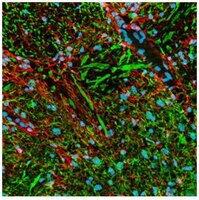NE1022 Sigma-AldrichPhosphoDetect™ Anti-Neurofilament H Mouse mAb (SMI-31)
This PhosphoDetect™ Anti-Neurofilament H Mouse mAb (SMI-31) is validated for use in ELISA, Frozen Sections, Immunoblotting, ICC, Paraffin Sections, IP for the detection of Neurofilament H.
More>> This PhosphoDetect™ Anti-Neurofilament H Mouse mAb (SMI-31) is validated for use in ELISA, Frozen Sections, Immunoblotting, ICC, Paraffin Sections, IP for the detection of Neurofilament H. Less<<Recommended Products
Overview
| Replacement Information |
|---|
Key Specifications Table
| Species Reactivity | Host | Antibody Type |
|---|---|---|
| Ch, Ma, Xn | M | Monoclonal Antibody |
Products
| Catalog Number | Packaging | Qty/Pack | |
|---|---|---|---|
| NE1022-100UL | Glass bottle | 100 ul |
| Product Information | |
|---|---|
| Form | Liquid |
| Formulation | PBS, 0.09% Sodium Azide |
| Positive control | Rat brain or central nervous system cytoskeletal preparations |
| Quality Level | MQ100 |
| Physicochemical Information |
|---|
| Dimensions |
|---|
| Materials Information |
|---|
| Toxicological Information |
|---|
| Safety Information according to GHS |
|---|
| Safety Information |
|---|
| Product Usage Statements |
|---|
| Packaging Information |
|---|
| Transport Information |
|---|
| Supplemental Information |
|---|
| Specifications |
|---|
| Global Trade Item Number | |
|---|---|
| Catalog Number | GTIN |
| NE1022-100UL | 04055977209907 |
Documentation
PhosphoDetect™ Anti-Neurofilament H Mouse mAb (SMI-31) SDS
| Title |
|---|
PhosphoDetect™ Anti-Neurofilament H Mouse mAb (SMI-31) Certificates of Analysis
| Title | Lot Number |
|---|---|
| NE1022 |
References
| Reference overview |
|---|
| Raina, A.K., et al. 1999. Neuroreport 10, 1355. Yang, C.C., et al. 1998. Brain 121, 1089. Giasson, B.I and Mushynski, W.E. 1996. J. Biol. Chem. 271, 30404. Mirabella, M., et al. 1996. J. Neuropath. Exp. Neurol. 55, 774. Xiao, J. and Monteiro, M.J. 1994. J. Neurosci. 14, 1820. |













